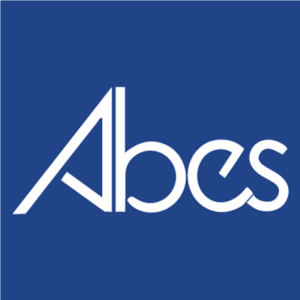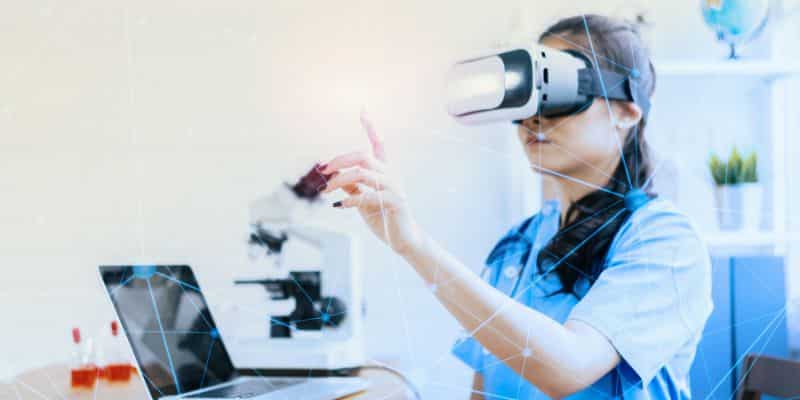Staying ahead with the latest educational advancements is key to producing competent and confident healthcare professionals. Virtual Reality (VR) and Augmented Reality (AR) are revolutionizing healthcare education by providing immersive, interactive, and highly effective training experiences. For prospective ABES students, understanding the impact and benefits of VR and AR in their healthcare education can illuminate the path to a successful career in healthcare.
Here are the top 8 ways VR and AR are transforming healthcare education.
1. Immersive Learning Environments
VR and AR create immersive learning environments that simulate real-world medical scenarios. These technologies enable students to interact with virtual patients and practice procedures in a controlled, risk-free setting. This hands-on experience helps bridge the gap between theoretical knowledge and practical application. Prospective ABES students can look forward to engaging and lifelike training sessions that prepare them for real-life clinical situations.
2. Enhanced Anatomical Understanding
One of the significant advantages of VR and AR is their ability to provide detailed and interactive 3D visualizations of human anatomy. Students can explore anatomical structures layer by layer, gaining a deeper and more comprehensive understanding of the human body. This level of detail is challenging to achieve with traditional textbooks and models. For future healthcare professionals, this means a solid foundation in anatomy, which is crucial for accurate diagnoses and effective treatment plans.
3. Safe Practice for High-Risk Procedures
Practicing high-risk procedures on real patients can be daunting and dangerous. VR and AR offer a safe alternative, allowing students to perform complex surgeries and emergency interventions virtually. This practice helps build proficiency and confidence, ensuring that learners are well-prepared when they perform these procedures on real patients. For ABES students, this means a safer learning experience and the opportunity to perfect their skills without the fear of causing harm.
4. Real-Time Feedback and Assessment
VR and AR technologies provide immediate feedback and assessment during training sessions. Instructors can monitor students’ performance in real time, offering constructive criticism and guidance to help them improve. This instant feedback loop accelerates learning and ensures that students quickly correct their mistakes. For prospective ABES students, this means receiving personalized support and mentorship, enhancing their learning outcomes and overall competence.
5. Collaborative Learning Opportunities
Healthcare is a team-based profession, and effective communication and collaboration are essential. VR and AR facilitate collaborative learning by allowing multiple students to interact within the same virtual environment. They can work together on patient cases, practice teamwork, and develop critical communication skills. For those entering the healthcare field, these experiences foster dedicated team dynamics and prepare them for the collaborative nature of clinical practice.
7. Enhanced Retention and Engagement
Studies have shown that immersive learning experiences can significantly improve information retention and student engagement. VR and AR make learning more interactive and enjoyable, helping students stay focused and motivated. By engaging multiple senses, these technologies ensure that learners retain more information compared to traditional methods. For new healthcare students, this means a more effective and enjoyable learning experience, leading to better academic performance and preparedness for real-world challenges.
8. Continuous Innovation and Adaptation
The fields of VR and AR are continuously evolving, with new advancements and applications emerging regularly. This constant innovation means that healthcare education will continue to improve and adapt, providing students with the latest tools and techniques. For prospective ABES students, choosing a program that embraces VR and AR means staying at the forefront of educational technology and being well-prepared for the future of healthcare.
Take Your Healthcare Education to the Next Level with ABES
Virtual and augmented reality are reshaping healthcare education, making it more immersive, effective, and accessible. For prospective students, these technologies offer an exciting and transformative learning experience that equips them with the skills and knowledge needed for a successful career in healthcare.
Embracing VR and AR in their education journey ensures they are well-prepared to meet the demands of the ever-evolving healthcare landscape. To learn more about our cutting-edge education program, contact ABES today.

Rebecca Cicero
Simulation Coordinator
Rebecca Cicero is a seasoned professional with a passion for the dynamic realm of healthcare simulation. With 15 years of dedicated experience in the field, Rebecca’s commitment to excellence is showcased by her CHSOS certification, a testament to her expertise in health simulation. Known for thriving in fast-paced environments, Rebecca excels at orchestrating intricate simulation scenarios with precision and innovation.
Her journey in the health simulation field has been marked by a genuine love for both the simulation process and the students she guides. Rebecca finds joy in witnessing the transformative power of simulation as a tool for learning and skill development. Beyond her technical proficiency, Rebecca is recognized for her creative approach to simulation, infusing scenarios with imagination to enhance the learning experience.
Her dedication to advancing healthcare education through simulation has not only made her a respected professional in the industry but also a mentor who takes pride in nurturing the growth of future healthcare professionals.


